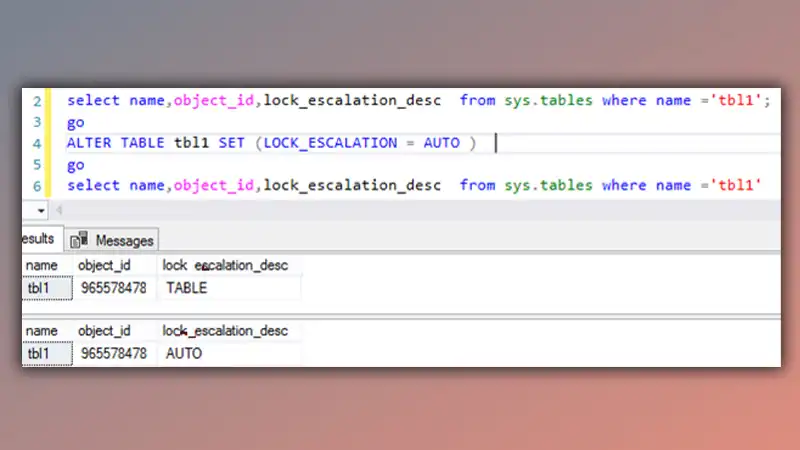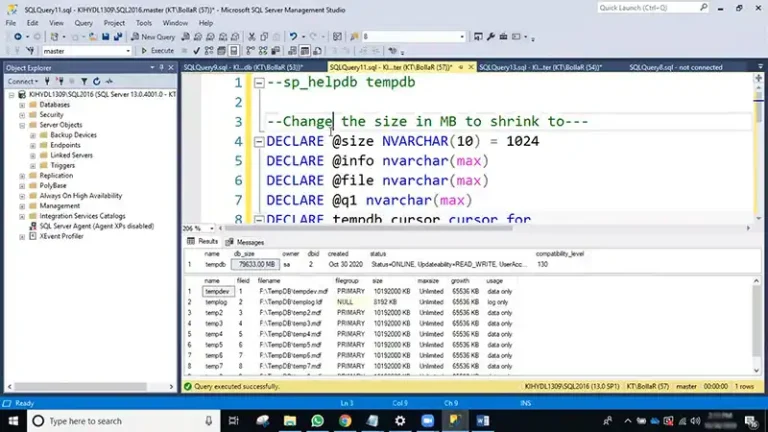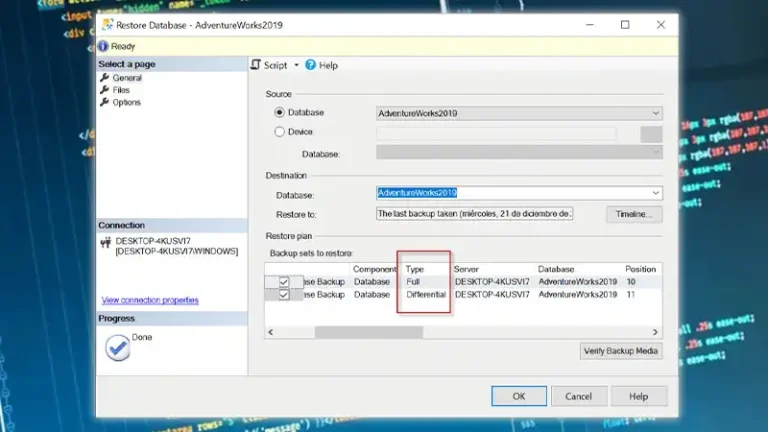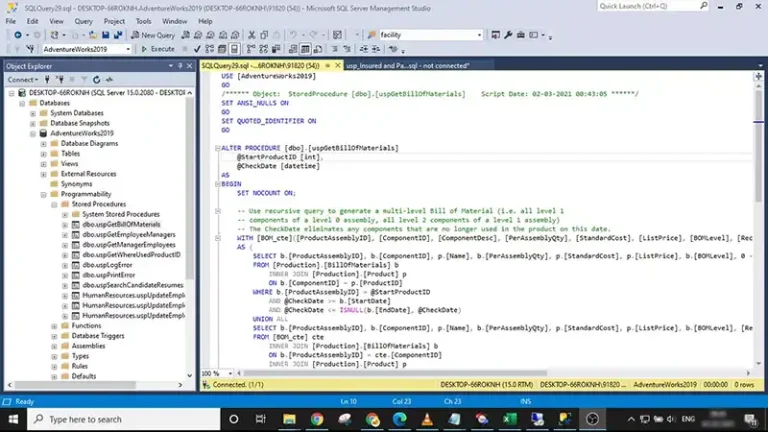What Is Lock Escalation in SQL Server | Explained
Lock escalation is the process of converting many fine-grained locks, such as row or page locks, into table locks. Microsoft SQL Server dynamically determines when to escalate a lock.
Whenever multiple users or processes interact with the same data simultaneously, the database system must ensure data integrity and consistency. One of the mechanisms employed to handle this is the use of locks.
Now we will get to know in detail in this article.

Exploring Lock Escalation
Lock escalation in SQL Server streamlines locks by converting many fine-grained locks (rows/pages) into fewer coarse-grained locks (tables) to cut down resource use. Locks, grabbed at row/page/table levels based on data amount and isolation levels, can strain resources and cause performance problems.
To optimize, SQL Server escalates locks from lower (rows/pages) to higher levels (tables) when a threshold is hit, reducing the burden of managing numerous locks.
Types of Lock Escalation
In SQL Server, lock escalation primarily occurs in two types:
Table Lock Escalation
– Purpose: When a certain threshold of locks is acquired at a finer granularity (rows or pages) within a table by concurrent transactions, SQL Server may escalate these locks to a coarser-grained table-level lock.
– Optimization: Reduces the total number of locks held by transactions, minimizing the resources needed for lock management and potentially improving performance in scenarios with high concurrency.
Partition Lock Escalation
– Usage: Specifically applies to partitioned tables.
– Functionality: Similar to table lock escalation but operates at the partition level. If locks accumulate within a partition due to concurrent transactions, SQL Server might escalate these locks to encompass the entire partition for more efficient management.
– Benefit: Helps in reducing the number of locks held at a finer granularity within a partitioned table, optimizing resource utilization and potentially enhancing concurrency.
These types of lock escalation mechanisms aim to strike a balance between ensuring data integrity and improving performance by converting numerous fine-grained locks into coarser-grained locks. The goal is to minimize lock overhead and contention while maintaining efficient concurrency control within the database system.
Implications of Lock Escalation
While lock escalation is intended to improve performance by reducing the number of locks maintained by the system, it’s essential to consider its potential impact:
Resource Optimization
– Pros: Reduces the number of individual locks held by transactions, minimizing memory consumption and lock management overhead.
– Cons: Can potentially impact concurrency if transactions are waiting for escalated locks, affecting system performance.
Concurrency Management
– Pros: Enhances concurrency by reducing lock contention among concurrent transactions, allowing smoother access to shared resources.
– Cons: In cases where lock escalation causes transactions to wait for escalated locks, it may lead to decreased parallel access and potentially impact throughput.
Transaction Throughput
– Pros: Optimizes system resources, potentially improving overall transaction throughput by minimizing lock overhead.
– Cons: In scenarios with frequent lock escalation, particularly for write-heavy workloads, transaction throughput might be affected due to increased contention and lock waits.
Isolation and Consistency
– Pros: Supports maintaining isolation levels and data consistency by ensuring proper locking mechanisms.
– Cons: Depending on isolation levels and workload characteristics, escalated locks might affect the granularity of control over specific data access patterns, potentially impacting isolation levels.
Database Design Considerations
– Pros: Influences database design considerations, encouraging strategies like table partitioning or indexing to optimize lock granularity and escalation behavior.
– Cons: Poorly designed database structures or inadequate indexing might lead to frequent lock escalation, impacting performance negatively.
Impact on Deadlock Scenarios
– Pros: Lock escalation itself doesn’t cause deadlocks, but increased lock contention due to escalated locks might contribute to deadlock situations.
– Cons: Escalated locks could potentially increase the likelihood of deadlocks, especially in scenarios with conflicting access patterns.
Mitigating Lock Escalation
To manage and control lock escalation, database administrators and developers can employ various strategies:
Indexing
Proper indexing can reduce the need for escalated locks by optimizing access paths to data, thereby minimizing the number of rows and pages locked.
Batch Processing
Processing data in smaller batches instead of large transactions can limit the accumulation of locks and potential escalation.
Isolation Levels
Choosing appropriate isolation levels for transactions can impact the granularity and escalation of locks.
Frequently Asked Questions
Are there alternatives to lock escalation for managing locks?
Yes, SQL Server offers features like snapshot isolation or row-versioning-based isolation levels (such as Read Committed Snapshot Isolation – RCSI) that provide alternatives to traditional lock-based concurrency control, reducing lock contention in some scenarios.
Can lock escalation be controlled or configured?
Yes, to some extent. While SQL Server automatically handles lock escalation based on internal thresholds, administrators can influence or prevent lock escalation using techniques like table partitioning or adjusting isolation levels.
Does lock escalation occur in all SQL Server transactions?
Lock escalation is a feature designed to optimize lock management in high-concurrency scenarios. It typically occurs in transactions that acquire a large number of locks, but it might not trigger in every transaction, especially in smaller, low-contention environments.
Conclusion
Lock escalation is a crucial mechanism in SQL Server’s concurrency control strategy, aiming to balance performance and resource utilization. While it optimizes lock management, it also introduces considerations for contention, isolation, and resource usage. Understanding and managing lock escalation is essential for maintaining an efficient and scalable database system.






